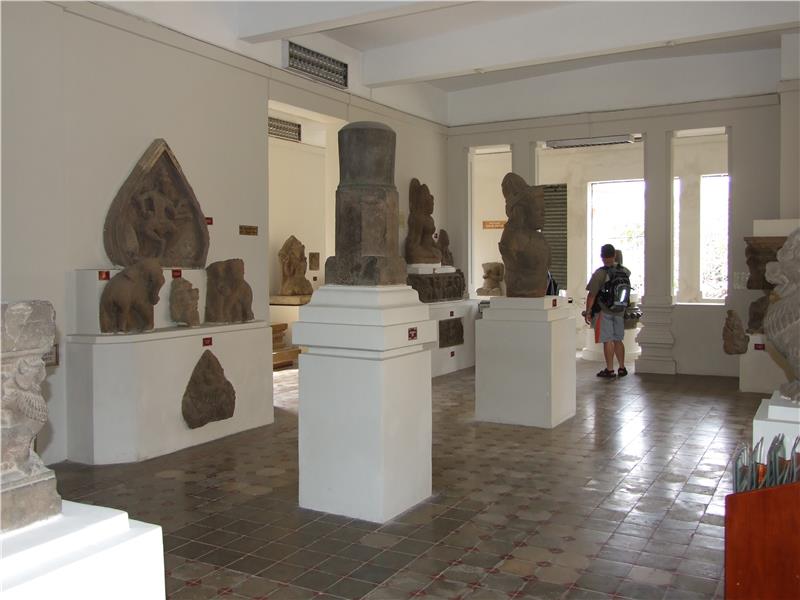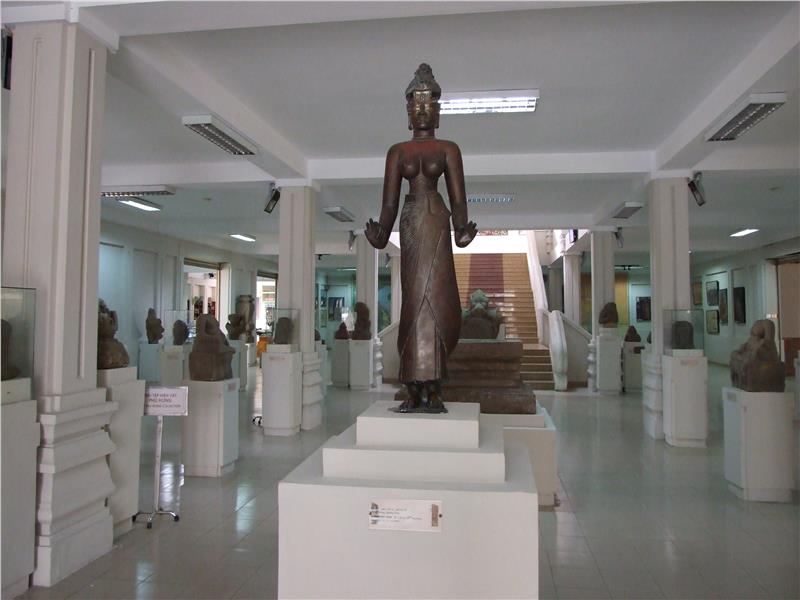Mon, 08 Sep 2014. Last updated Fri, 08 May 2015 13:05
| Mon | Tue | Wed | Thu | Fri | Sat | Sun |
|---|---|---|---|---|---|---|
After two months, the excavation team has found a large number of artifacts of Cham ancient people in Hoa Phuoc Commune, Hoa Vang District, Da Nang City. The process of exaction was implemented in full steps including digging, shoveling, and cleaning. After evaluated, 161 artifacts and pieces of artifacts have been recognized as ancient valuable artifacts of Cham ancient people. All of them are imbued with cultural and religious characteristics of Cham people more than 1000 years ago. Especially, the excavation team also found traces of ancient bricks carved with pictures of Cham culture. It shows that ancient people had made use of materials of an old collapsed tower to build new towers like nowadays.

Mr. Nguyen Chieu, a lecturer of archaeology at the University of Social Sciences and Humanities under the Hanoi National University said that those are convincing evidences to help determine the exact chronology of the tower. However, the most wonderful thing is the three-step staircase made of monolithic with the shape of a large lotus. It is considered as the largest and the only monolithic three-step staircase that have been known up to now in the art of stone sculpture of Cham culture.
In addition, during excavation, archaeologists also found plenty of carving bricks which had been used for decorative purposes in old architectural works that were reused now. There were many ancient tiles shaped in triangle and round, pieces of Go Sanh pottery, pieces of ancient Vietnamese pottery in 17th and 18th century, Chinese ceramics in Tong – Nguyen Dynasty, three-step staircase, a head of Shiva statue, 2 heads of prayer statues, decorative objects, a big-size altar, lingas and many other religious and worshipping objects. In the past, the main god of Cham people was Shiva. Therefore, they made many sculptures of worshipping objects dedicated to Shiva. Earlier, some lingas which had been found in Cham towers were carved with the image of Shiva’s face and covered with precious metals. Those artifacts found lately contribute greatly to researches of archaeologists and historians on Cham culture.

According to archaeologists, Qua Giang Commune was formerly a crowded residential area of Cham people. It was located near the river, therefore, it was place where small businesses traded and exchanged goods, and probably even the cultural center of Cham Kingdom.
All 161 artifacts found in the last excavation were displayed at the Museum of Cham Sculpture which is located in Hai Chau District, Da Nang, near the Han River. The 1000-square-meters museum is now the largest museum of Cham culture in Vietnam, which gathers thousands of artifacts from several localities such as My Son, Tra Kieu, Dong Duong, Thap Man, Quang Tri, Quang Ngai, Binh Dinh and Kon Tum.
Sorry, System is updating. Please, press SEARCH NOW

 Đặt vé máy bay cho người Việt?
Bấm vào đây
Đặt vé máy bay cho người Việt?
Bấm vào đây
Our service uses cookies for technical, analytical and marketing purposes. See our Cookie và Privacy policies for more information. If you agree to this, just keep browsing.
